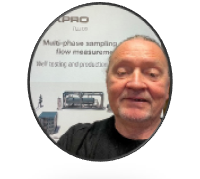BRIDGING THE GAP BETWEEN RESERVOIR AND SAMPLE; REDUCING ASSET DEVELOPMENT RISK BY USING DOWN-HOLE MERCURY TRAPPING AND NON-REACTIVE SAMPLER FOR TRACE COMPONENT SAMPLING
Downtown Houston
Speaker:
Seminar Date: Jun 23 2022
Registration Opens: Jun 07 2022 - Jun 23 2022
Time: 12:00 PM - 01:00 PM (US CDT)
Admission/Registration Link: None
Donation Link: None
Meeting/Webinar Link: https://register.gotowebinar.com/register/6965838693062593804
Contact: Muhammad Noman Khan (Editor, SPWLA Houston Chapter)
Corresponding: editor@spwla-houston.org
Fees: FREENOTES:
Speaker : Bjørn Dybdahl (Expro / Petrotech)
Date : Thursday, June 23rd, 2022
Time : 12:00 pm – 1:00 pm (US CDT)
Admission : Free registration using the link below
https://register.gotowebinar.com/register/6965838693062593804
After registering, you will receive a confirmation email containing information about joining the webinar.
Contact : Artur Posenato Garcia (SPWLA Houston Chapter VP Downtown)
Corresponding vpdowntown@spwla-houston.org

ABSTRACT:
Accurate mercury and hydrogen sulfide measurements are essential for facilities design. Existing sampling methods are flawed in that they are not guaranteed to preserve the full quantity of reactive trace components present in a hydrocarbon sample. Subsequent incomplete measurements can have a significant cost and HSE impact. A novel down-hole sample capture and preservation of reactive components system are presented, enabling quicker definitive identification of risks to plant integrity, worker and environmental exposures, and sales value. A selection of materials and coatings were tested for their inertness in relation to mercury and hydrogen sulfide in various fluids (gas, oil, water, and multiphase). All materials also had to be suitable for use in anticipated down-hole conditions. The available literature was reviewed, and a mercury capturing system was designed and tested in various fluids. Once materials and designs were selected, prototypes were tested using certified calibration materials and samples spiked with known amounts of mercury. When constructed in a chamber free from lubricants, O-rings, and pistons, the selected material and coating combination was shown to result in minimal sulfur component loss over an extended period and sufficiently delay the loss of mercury to allow it to be captured at reservoir concentrations. Hydrogen sulfide concentrations were maintained in the tools for an extended period, allowing the retrieval to the surface of bottom-hole samplers, resulting in surface concentrations representative of that down-hole. Mercury was successfully captured at down-hole conditions, preventing the impact of temperature and pressure changes at the surface. Once at the surface, the mercury can be quantified without any losses associated with traditional sample handling. Earlier identification of the presence of these species, along with accurate quantification, will aid facility design, such as whether removal facilities are required to meet sales specifications and prevent harm to workers and the environment through unconsidered emissions of toxic components during production. This paper presents a data collection process enhancing the quality of information essential for field development and maintenance planning and introduces a novel sampling approach capable of capturing representative down-hole samples for trace analysis of mercury and sulfur species without losses experienced using existing techniques. The tool can be used within traditional sampling systems.
BIOGRAPHY:
Bjørn graduated from Horten College of Engineering in 1980 with a B.Sc. in Technical management and administration. After graduation, he joined Stolt Comex International as a diving engineer for 12 months. In 1981 he returned to further his education at the University of Stavanger. In 1984 he graduated with a B.Sc. in Petroleum Engineering.
While studying at UiS, he worked as Field Engineer for OTIS, a Halliburton company. In 1983 he founded Petrotech International, in response to the increasing requirements from oil companies for more detailed and better-quality reservoir data, as well as the need to accurately characterize produced fluid. Bjørn is the Managing Director of the company.
Petrotech's technology center in Norway is situated north of Haugesund. During his career in Petrotech, the company has established branch offices in Malaysia, Australia, the UK, the Netherlands, US, and United Arab Emirates.
In 1999 Petrotech signed a global and exclusive alliance agreement with Halliburton Energy Services (HES) to perform sampling services. Power Well, a US-based company acquired Petrotech in 2005. In 2007 Power Well was acquired by Expro.
He is still the Managing Director of Petrotech which is 100% Expro owned. He is also Global Sales Director in Expro. He is a member of SPE.
